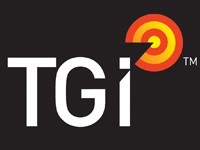It measures 19 product/service sectors and 8000 brands and has been running for 10 years in South Africa. The latest report (2013B) indicates that the evolution of the global economy creates new expectations for consumers.

Globally consumer confidence is looking stronger however, higher incomes do not translate into more disposable income due to the higher cost of living and consumers are becoming more critical of what they buy. Brands will not only compete within product category, but also across product category. The current socio-political environment in South Africa shows that we are fighting back and brands will come under crossfire as consumers are becoming stronger, more opinionated and righteous.
In South Africa, brands and marketers will need to work even harder as we are losing faith in government, brand promises and heroes. Content marketing will become key to win back consumers. Credibility is central and messaging needs to be engaging and intelligent, consumers are increasingly rejecting 'annoying' advertising. South Africans are strong word-of-mouth (WOM) advocators. They trust the opinions of others because of stronger family and cultural connections.
Digital has become our way of unique self-expression and brands need to not only actively engage with consumers, but also engage on a level that corresponds with values, both online and offline. South Africans are taking WOM online and championing mobile, internet and social networking, which provide a platform of greater social cohesion. Social media has provided a democratisation of opinion and expression, but these platforms require a major overhaul of the brand/consumer relationship from the advertisers.
The company can provide SELs (Socio-Economic Levels) as a good alternative to LSMs (Living Standards Measures), with more comprehensive segmentation. The selection and weighting of robust TGI samples is based on global best practice.
The SEL segmentation is a valuable insights tool for marketers, researchers and brand owners, providing an understanding of not only a consumer's potential to spend, but also the social context in which this potential is held. SEL presents a harmonised approach to socio-economic classification across multiple markets and works alongside national classification systems.
Unlike most socio-economic grading, which use the household basis, the Global TGI SEL is based on individual spending power and SEL groups are based primarily on consumption variables. Looking at socio-economics rather than economic levels in isolation, provides the marketer with valuable information so that they can target their campaign to their desired consumer and talk to the person rather than just talking to their wallet.
Ask Afrika has recently launched TGI Township in South Africa, as these communities are misunderstood to a large degree. Understanding and appreciating the nuances of township consumers will empower brands to tap into this market successfully. Above the line advertising is key in townships, with a focus on radio, television and out-of-home (OOH), WOM still garners the greatest trust.
Marketers need to realise the limitations of demographic segmentation and focus on mind-sets and lifestyles to foster a genuine understanding and engagement with these markets. The company has comprehensive brand data across all industries, markets and SEL and it provides retailer data.

It provides socio-economic lifestyle measures and audience measurement figures for all media universes. It has the ability to contextualise the local media landscape within the global context, which is highly beneficial to marketers, media planners and strategists working with international brands. It provides textured and detailed information on technology devices, cellphone usage, financial service types, shopping habits, product categories, brands, financial services and institutions, activities and automotive preferences. In addition, it measures life stages, sport, lifestyles, travel, attitudes, large appliances, clothing, small appliances and footwear.
Media consumption rates and technological aptitude are part of the survey and the global trend in media consumption shows an increase in online consumption (including laptops, desktops and mobile internet) which is important in building brand relationships and in brand positioning. Consumers are waking up to the reality that digital data is fast becoming a currency; personal data is a commodity with a price tag.
These are huge changes with wide disparities across countries in terms of technological competence, usage and access, the tool, which measures the behaviours and attitudes of 800,000 people in the world, seeks to interpret what these changes mean for brands. There has been much debate around the rise of digital media, there are 2.5 billion internet users worldwide, China represents nearly a quarter of the global internet users, the lack of penetration in South Africa means that we are lagging in the digital world, yet we have the 4th highest cellphone penetration globally.
Digital growth lies in mobile access and smartphones are changing the way we communicate. Brands are being called on to use technology to create further connections. Apps are becoming more engaged with brands, there are more apps in the world than people. The company can measure engagement levels, user behaviour and the impact digital has on consumers' lives.
Trust has gone down year-on-year (YOY) since 2011 and the call for transparency, ethical conduct and fairness is taking centre stage in brand messaging. Newspapers and radio remain the most trusted mediums. As sources of influence, the global trend has seen a comeback in the credibility of local newspapers and radio; online is influential due to its accessibility, but it is also cluttered and not necessarily credible.
Twitter has become the new breaker of news with newspapers contextualising it. OOH advertising is becoming more noticeable, as people tend to filter out the noise of excessive and repetitive marketing messages from television and online. The reach of television is becoming diluted twice; it is losing consumer attention as it becomes a second screen, with many people multi-platforming and fast-forwarding through the advertisements.
The survey measures changing media consumption habits in the face of new technology and measures not only cross-platform media usage, but also multi-tasking between different platforms.